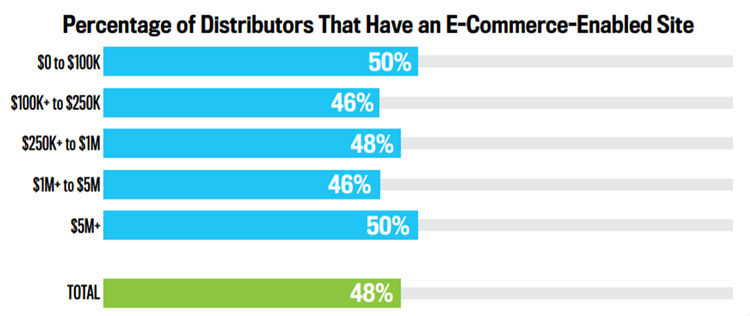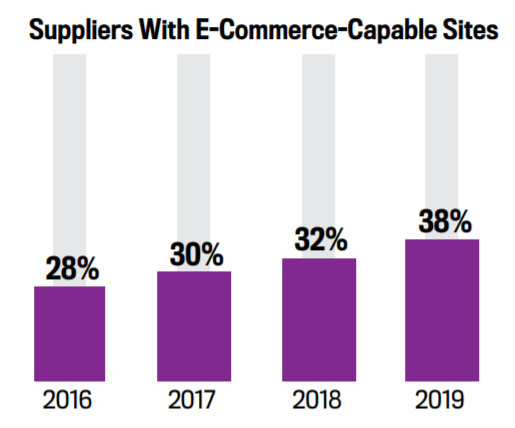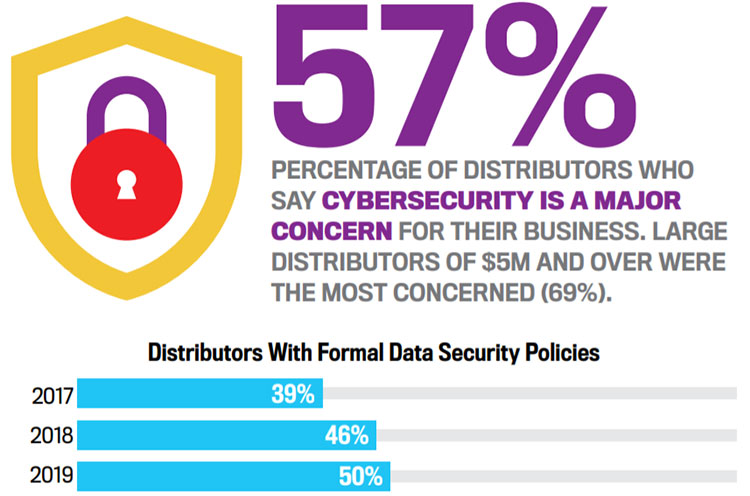July 22, 2020
SOI 2020: Technology Advancement Accelerates
Coronavirus shutdowns forced businesses to implement new tech very quickly, and for many firms there’s no going back.
Shutdowns from the coronavirus pandemic forced American businesses to adapt to new technologies to stay viable – often on a massive scale and with abbreviated timelines. Office workers of all stripes had to be outfitted with tools for remote work, and infrastructures shored up to support them. Earthbound businesses moved to the cloud. E-commerce transactions also went sky-high, with shoppers buying everything from groceries to furniture online, often for the first time. In fact, Adobe’s Digital Economy Index reported that in April, U.S. e-commerce sales jumped 49% compared to a baseline period in early March. It was as if every day was Cyber Monday.
Don't Miss: More SOI 2020
The promotional products industry mirrors those trends. Mitch Hammer, senior director of marketing for Order My Gear, says distributors who used the e-commerce platform had their best quarter ever online during the pandemic. A large part was due to how rapidly many were able to pivot to selling personal protective equipment (PPE), Hammer adds. “It was amazing to see how quickly they shifted their goods and the message of what they were doing,” she says.


E-Commerce Evenly Distributed: It isn’t exclusively for big companies anymore – roughly the same percentage of small, medium and large firms have an e-commerce presence.
JP Hunt, partner and co-founder of industry software firm InkSoft, believes the coronavirus “finally validated” e-commerce in the promotional products and decorated apparel space. “Businesses that were e-commerce-enabled were in a position to continue to do business and able to weather the storm. Those that didn’t were scrambling,” he says. “We had a lot of inquiries from stressed-out business owners needing tech to serve their customers.”
Even as states are loosening restrictions and businesses are reopening, tech professionals in the industry say it’s unlikely to expect a return to certain pre-COVID methods of business and shopping technology. “If it weren’t for COVID, I would never have taken our entire inside sales team and in one afternoon made them all remote,” says Counselor’s 2019 Tech Executive of the Year Jon Norris, VP of operations at Starline (asi/89320). “We were put in this catapult and thrown forward five years, and now that we’re all here, I don’t think a lot of us are going back.” He adds at least half of Starline’s office staff wants to continue working remotely even after COVID.

Cyber Concerns: Damaging cyberattacks over the past few years have certainly got distributors’ attention. More than half say cybersecurity is a major concern, and they’re taking action, with more firms instituting formal digital protection.
The same holds true at many big corporations and tech firms. Companies like Shopify, Twitter and Facebook have said that most or all their employees can continue working from home after the pandemic. “A lot of businesses are likely going to walk away from leases on commercial properties,” Hunt says. “They can slash their overhead expense and work as a virtual organization.”
“We were put in this catapult and thrown forward five years, and now that we’re all here, I don’t think a lot of us are going back.” Jon Norris, Starline
Though e-commerce and virtual meetings are likely to play a larger role than they did pre-COVID, they’re not going to take over completely. Videoconferencing and collaboration apps like Zoom, Teams and Slack have made it easy to keep in contact across vast distances, but for many, there’s still something missing.
Even though the team at promotional products technology firm Facilisgroup has been just as productive remotely, says President Ashley McCune, the company has felt the lack of “vision and strategic thinking that comes from being able to sit around a table and brainstorm and whiteboard.”

Staying Wary of Amazon: Concerns about Amazon have remained remarkably consistent over the past three years.
And though salespeople have adapted to virtual meetups with clients, there’s still something missing when a prospect can’t examine a sample in person, particularly for apparel, where hand feel is so important, says Mike Knapick, chief information officer of Top 40 supplier SanMar (asi/84863). However, the good thing is that businesses don’t necessarily have to choose all or nothing when it comes to virtual work. “You’ll end up with this hybrid model with an expanded use of virtual interaction, but some of that physical interaction is still really important,” he says.
The coronavirus pandemic forced many businesses to examine their technology use – or lack thereof – but at the end of the day, it’s still only one piece of the puzzle when it comes to running a successful company, says McCune, adding that businesses need strong financials and a high-quality workforce in addition to technology to survive and thrive. “Executives need to take this opportunity to look at all the pillars of their business,” she says, “and ensure that they can be ready for what’s next.”
Three Technologies to Expect Post-COVID
1. Virtual samples will get an upgrade. The promotional products industry needs to get on par with other industries in terms of automating virtual imaging and 3-D virtual technology, says Jon Norris, vice president of operations at Starline. “I can virtually flip a car every which direction, change its color and features all in my browser,” he adds. “If they can figure out how to sell a $40,000 car online, we need to be able to figure out how to sell a $10 item online.”
2. Retail will get a makeover. Brick-and-mortar won’t die out, but many retailers will change their business model, predicts JP Hunt, co-founder of InkSoft. Physical stores will become a place for brand extension and experience, with fewer items warehoused in the back. Goods will instead be shipped directly to consumers’ homes. It’s a change that’s already happening, but with the coronavirus, “there will be an acceleration of that transformation,” Hunt says.
3. More sales calls will be done virtually. To cut down on travel time when it’s not necessary, many salespeople will continue to incorporate videoconferencing as a touchpoint with clients. “We’re more comfortable interacting virtually,” says Mike Knapick, CIO of SanMar. “We’ve all gone through this bootcamp of learning how to interact this way.” In-person meetings will still have their place, but expect virtual meetings to continue playing a major role, even after COVID.